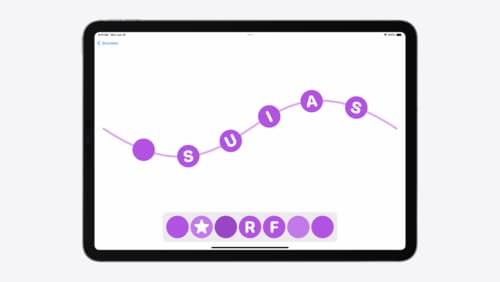How the state management in SwiftUI works?
Asked on 2024-08-06
1 search
State management in SwiftUI is a fundamental concept that ensures your user interface stays in sync with the underlying data. Here are the key points on how it works:
-
State-Driven Views: SwiftUI views are state-driven, meaning that when your view state changes, SwiftUI automatically updates the UI. This eliminates the need for boilerplate code and reduces update bugs. SwiftUI maintains a representation of the user interface behind the scenes and updates the outputs based on the new data values (SwiftUI essentials).
-
State and Binding:
- State: This is used to create a new internal source of data for a view. When you mark a view property as
@State, SwiftUI manages the storage and provides it back for the view to read and write. For example, a view can use state to keep track of a rating value and update it over time (SwiftUI essentials). - Binding: This creates a two-way reference to the state of another view. It allows a child view to read and write a value owned by a parent view. This is useful for creating reusable components that need to modify shared state (SwiftUI essentials).
- State: This is used to create a new internal source of data for a view. When you mark a view property as
-
Observable Objects: SwiftUI can also work with observable objects. These are classes that conform to the
ObservableObjectprotocol and use the@Publishedproperty wrapper to notify views of changes. This allows for more complex state management scenarios where multiple views depend on the same data (SwiftUI essentials). -
Declarative Syntax: SwiftUI views are descriptions of what the current state of the UI should be. They are value types defined using structs, which makes them lightweight and easy to manage. SwiftUI takes these descriptions and creates an efficient data structure to represent them, updating the UI as needed (SwiftUI essentials).
-
Animations: State changes can be animated by wrapping them in an
withAnimationblock. SwiftUI applies default animations or allows you to customize them, ensuring smooth transitions between state changes (SwiftUI essentials).
For a deeper dive into these concepts, you can watch the session SwiftUI essentials.

What’s new in SwiftUI
Learn how you can use SwiftUI to build great apps for any Apple platform. Explore a fresh new look and feel for tabs and documents on iPadOS. Improve your window management with new windowing APIs, and gain more control over immersive spaces and volumes in your visionOS apps. We’ll also take you through other exciting refinements that help you make expressive charts, customize and layout text, and so much more.

Enhance your UI animations and transitions
Explore how to adopt the zoom transition in navigation and presentations to increase the sense of continuity in your app, and learn how to animate UIKit views with SwiftUI animations to make it easier to build animations that feel continuous.

SwiftUI essentials
Join us on a tour of SwiftUI, Apple’s declarative user interface framework. Learn essential concepts for building apps in SwiftUI, like views, state variables, and layout. Discover the breadth of APIs for building fully featured experiences and crafting unique custom components. Whether you’re brand new to SwiftUI or an experienced developer, you’ll learn how to take advantage of what SwiftUI has to offer when building great apps.
